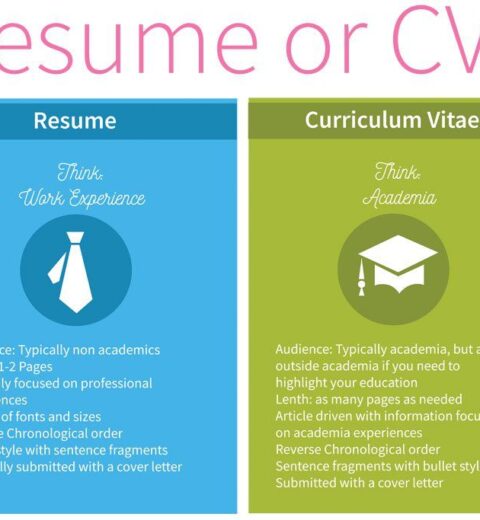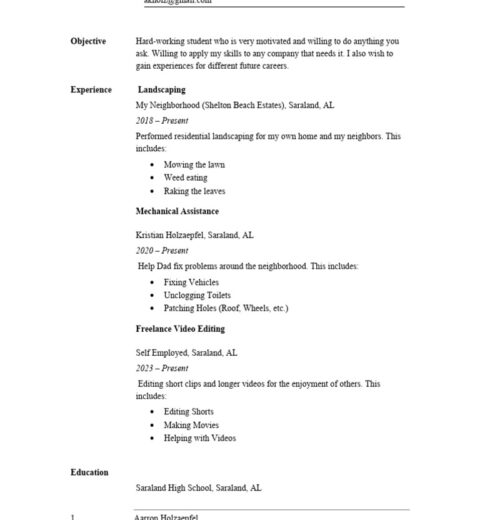Creating a resume is an essential step in pursuing a career path or job. The daunting task of summarizing qualifications, experiences, and aspirations in a concise format can induce anxiety among many job seekers. However, the art of resume crafting can transform into a straightforward endeavor with the right approach and understanding. Even if you struggle with spelling, constructing a compelling resume remains achievable.
Before delving into the mechanics of resume writing, it’s imperative to recognize the primary purpose of this document: to showcase your professional journey to potential employers. A well-structured resume acts as a personal branding tool that highlights key attributes and makes a memorable impression. Thus, comprehending the anatomy of a resume is crucial.
At its core, a resume typically comprises several sections: contact information, objective or summary statement, skills, work experience, education, and optional sections such as certifications or volunteer work. Each element plays a pivotal role in creating a comprehensive narrative about your career.
1. Contact Information
Your contact information should occupy the topmost section of the resume, ensuring that potential employers can easily reach you. This section must include your full name, phone number, email address, and, optionally, your LinkedIn profile or personal website. Make sure that your email address conveys professionalism; avoid using whimsical monikers that might detract from your credibility.
2. Objective or Summary Statement
An objective or summary statement offers a brief insight into your career goals and what you bring to the table. In one or two sentences, articulate what you hope to achieve and the skills that make you a reasonable candidate. For instance, “Dynamic marketing professional with over five years of experience in digital branding and social media engagement” affords readers an immediate understanding of your qualifications.
3. Skills
Following your summary, the skills section succinctly lists competencies relevant to the position sought. Tailor this list to match the job description, which may include technical skills, soft skills, or industry-specific capabilities. Key terms such as “analytical thinking,” “project management,” or “customer relations” can be advantageous to incorporate, capturing the attention of applicant tracking systems (ATS) used by many employers today.
4. Work Experience
The work experience section constitutes the heart of your resume and should chronicle your professional history in reverse chronological order. For each position held, include the job title, company name, location, and employment dates. Underneath, creatively present your responsibilities and achievements using bullet points. Use action verbs and quantifiable metrics to elucidate your impact. For instance, “Increased sales by 20% through targeted outreach efforts” provides a concrete illustration of your contributions.
5. Education
Education represents the formal training you’ve received. List your degrees, institutions attended, and graduation dates. If relevant, you may also include honors or extracurricular involvement that showcases your leadership skills or dedication. For entry-level positions, the education section can be paramount, especially if you lack extensive work experience.
6. Additional Sections
Optional sections such as certifications, volunteer work, or professional affiliations can enrich your resume. Certifications demonstrate a commitment to continuous learning. Participation in relevant organizations can showcase networking skills and industry engagement. While these sections are not mandatory, they can help differentiate you from other candidates.
7. Formatting and Style
The aesthetic appeal of your resume plays a significant role in its effectiveness. Opt for a clean, professional layout with a readable font and consistent formatting. White space is equally vital; avoid clutter by allowing room for each section to breathe. Use bolding or italics sparingly for emphasis but refrain from overly ornate designs that may distract from the content.
Addressing Misspellings
Even if your spelling leaves much to be desired, there are strategies to mitigate this issue. First and foremost, utilize spelling and grammar-checking tools available in word-processing software. Furthermore, read your resume aloud; this practice may help you catch inaccuracies you might overlook while reading silently. Alternatively, consider enlisting a friend or a professional service to critique your document. A fresh set of eyes can provide valuable feedback and help catch errors.
In the event of a misspelling slipping through, focus on the strength of your content. Communicating your achievements and the value you bring to potential employers carries substantial weight. While spelling is important, employers also emphasize experiential worth and the potential for growth.
Closing Thoughts
Crafting a resume is a vital component of the job application process, one that requires careful thought and presentation. By paying attention to detail, showcasing relevant experiences, and articulating your skills effectively, you can create a resume that positions you for success, regardless of minor typographical errors. Remember, employers are looking for candidates who can bring value to their organization. Your resume is merely a gateway to showcasing your potential. With practice and refinement, you can master the art of resume writing and confidently navigate the job market.




